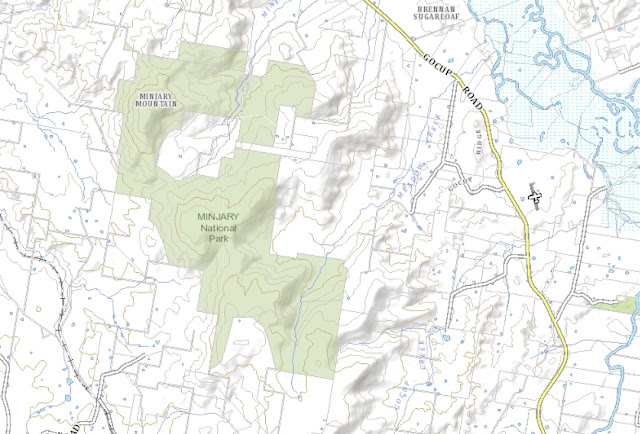Location, access and how to get there
The Burrinjuck Nature Reserve is located on the northern end of Lake Burrinjuck. It can only be accessed by car from Burrinjuck Road, which enters the Reserve about 104 kilometers (1 hour 15 minutes drive) from Canberra GPO. Around 2.2 kilometers into the Reserve, two management trails intersect with Burrinjuck Road, the Childowla Trail to the west and the Link Trail to the east, but private vehicles are not permitted on management trails within the Reserve. Burrinjuck Waters State Park, about 6.2 kilometers into the Reserve along Burrinjuck Road, has a range of visitor facilities and a single walking trail north into the Reserve.
http://maps.six.nsw.gov.au/
Bushwalking opportunities
Walking is permitted in the Reserve and there are two specific walking tracks: a section of the Hume and Hovell Walking Track which passes through the Reserve east of Burrinjuck Road and then into the Burrinjuck Waters State Park, and a very steep hiking trail from the State Park to Mount Barren Jack. There is also a network of about 30 kilometers of management trails in the Reserve west of Burrinjuck Road that could be walked.
Camping and other facilities
Camping and fires are not permitted in the Reserve. There are, however, camping and other facilities in the adjacent Burrinjuck Waters State Park.
Features
Size
5,207 hectares.
Natural features
The highest peak is Mount Barren Jack at 966 meters, and there are two other significant peaks in the Reserve: Mount Little Jack (883 meters) and Mount Europe (843 meters). Barren Jack Creek flows through much of the Reserve before flowing into Lake Burrinjuck. Other creeks flow out of the Reserve to the north, east and west. There are six forest ecosystems within the Reserve and sixteen Threatened species of fauna.
Heritage features
There are seven recorded Aboriginal heritage sites in the Reserve, and more are believed to exist. There are also fourteen identified historical sites.
References
Burrinjuck Nature Reserve Plan of Management (2010) -
link
National Parks and Wildlife Service - Burrinjuck Nature Reserve website -
link
Wikipedia -
link
Burrinjuck Waters State Park website -
link










